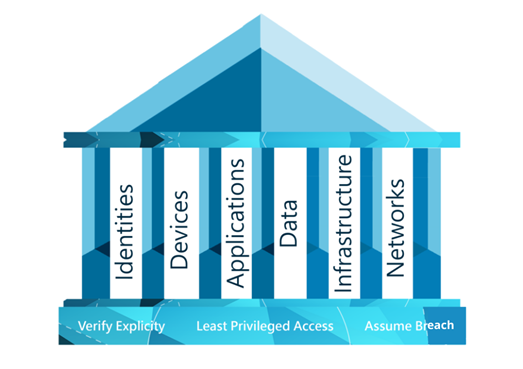
Protecting vital information is critical to your survival—no matter what the size or type of your business. Recent studies show that 93 percent of organisations that lose data because of a disaster go out of business within two years. Increasingly, businesses are adopting cloud backup solutions to address data protection challenges. Why?
The reason is simple: protecting data is difficult, expensive, unreliable, and unmanageable with traditional tape backup methods.
And the explosive growth of business data only increases the problem.
Cloud data protection solutions that combine the latest advancements in disk-based backup with secure, integrated, cloud technologies offer organisations fast and assured recovery of their critical enterprise data, while reducing costs and freeing the IT staff to focus on more mission-critical projects.
Cloud server backup solutions also reduce the burden of tape management and backup operations, by automatically storing the data safely offsite to protect for disaster-recovery purposes. Consider these ten reasons to move to the cloud for data backup and storage:
1. Achieve disaster recovery with secure, offsite cloud backup
You think you’re doing everything right. You back up your data on a regular basis. You check to see that your backup equipment and configurations are up-to-date and working properly. You test your restores. Yet, when a pipe bursts in your building and spills water over your servers and backup media, you still lose all your critical data in one night. Even if you’re extremely careful about backing up your data, that’s only half of the process.
To truly protect your backup data, you also must move it offsite. Too many organisations store their backup media onsite, needlessly exposing their data to risk from fire or flood. The time and money that you must spend to recreate lost data can be costly, not only in terms of lost productivity, but also in terms of lost revenue and customer good will.
On the other hand, disk-based cloud server backup uses the cloud to automatically transfer data offsite for disaster recovery. Your backup data is immediately off-premises only minutes after being updated. No matter what type of disaster strikes your organisation, you can restore data from moments before the disaster occurred.
2. Free yourself from manual and complex tape backup tasks
The unpleasant reality is that tape-based backup is time-consuming and tedious. While organisations know that they must protect their data, those with limited IT staff would prefer to focus their time on more strategic projects central to the business, rather than monitoring the progress of manual backups, reviewing logs, and troubleshooting problems. “Set-it-and go” cloud backup solutions reliably and automatically offload these functions, freeing staff to work with a more direct impact on your business—competitive advantage, productivity, and profitability. These solutions also standardise and automate the backup process throughout your organisation, without requiring IT staff at each location. A single backup application can protect both virtual and physical servers.
Besides freeing IT staff from manual chores, these solutions also provide IT with Web-based tools to manage and monitor all aspects of their server data protection. In addition, these solutions remove the burden of managing both a backup infrastructure and data protection process.
You can implement cloud backup solutions on a subscription basis from reliable third parties who offer them as managed services. The best of these managed services offer cloud backup with 24×7 coverage, proactive monitoring of data, instant scalability, predictable pricing, and no capital investment in traditional backup and recovery technology.
3. Get predictable costs and simpler budgeting
Cloud backup services are uniquely suited to address server data protection, including predictable monthly budgeting, and costs. The service is completely automated, providing immediate backup of server data to an offsite location, and leveraging the vendor’s infrastructure and expertise. This also frees IT personnel to become better aligned with business goals.
The charge for cloud backup is a known monthly service fee, rather than the capital cost of acquiring software licenses for specific servers. This allows for simpler budgeting and predictable monthly costs. There are no costs for software, backup hardware, maintenance, or media with cloud backup. The service provider bears the cost of the infrastructure and storage devices—now and in the future—as its customers grow.
4. Count on reliable, guaranteed data recovery
If lightning strikes your building tonight, you must ensure that you can restore that day’s data. Unfortunately, if you rely on a nightly backup process, restoring that data completely is impossible.

How often do you test your internal backups? Could you fully recover your data?
Cloud backup solutions solve this problem by automatically transmitting changes in files and databases to a secure, off-site facility for more continuous backup. Your staff can achieve this level of backup with minimal effort—just set it and go—greatly increasing reliable protection of your organisation’s data.
The best cloud server backup solutions not only protect recently changed files that are closed, but also capture changes in open files and databases, which can represent some of your most important enterprise data. Such solutions do so without disrupting your process flow. In addition, they provide guaranteed recovery in their Service Level Agreements (SLAs).
5. Minimise the risk and cost of downtime
Data protection is not a single activity or a one-time event. It’s a complex workflow of interconnected processes that extend far beyond simple onsite backup, including the following steps:
Backup replication of critical data to another device
Transfer of the replicated data to an offsite location to protect it from human-made or natural disasters
Storage that both protects and organizes the data so that you can recover it easily and quickly
Recovery of replicated data from storage whenever and wherever needed.
If your current data protection solution doesn’t address all of these steps, your organisation risks unacceptable exposure from partial protection that easily could result in costly, crippling downtime and the loss of irreplaceable data. Cloud server backup solutions offer a single low-overhead solution that addresses each step in the data protection workflow—and actually reduces the risks and cost associated with each step. These solutions provide the following benefits:





